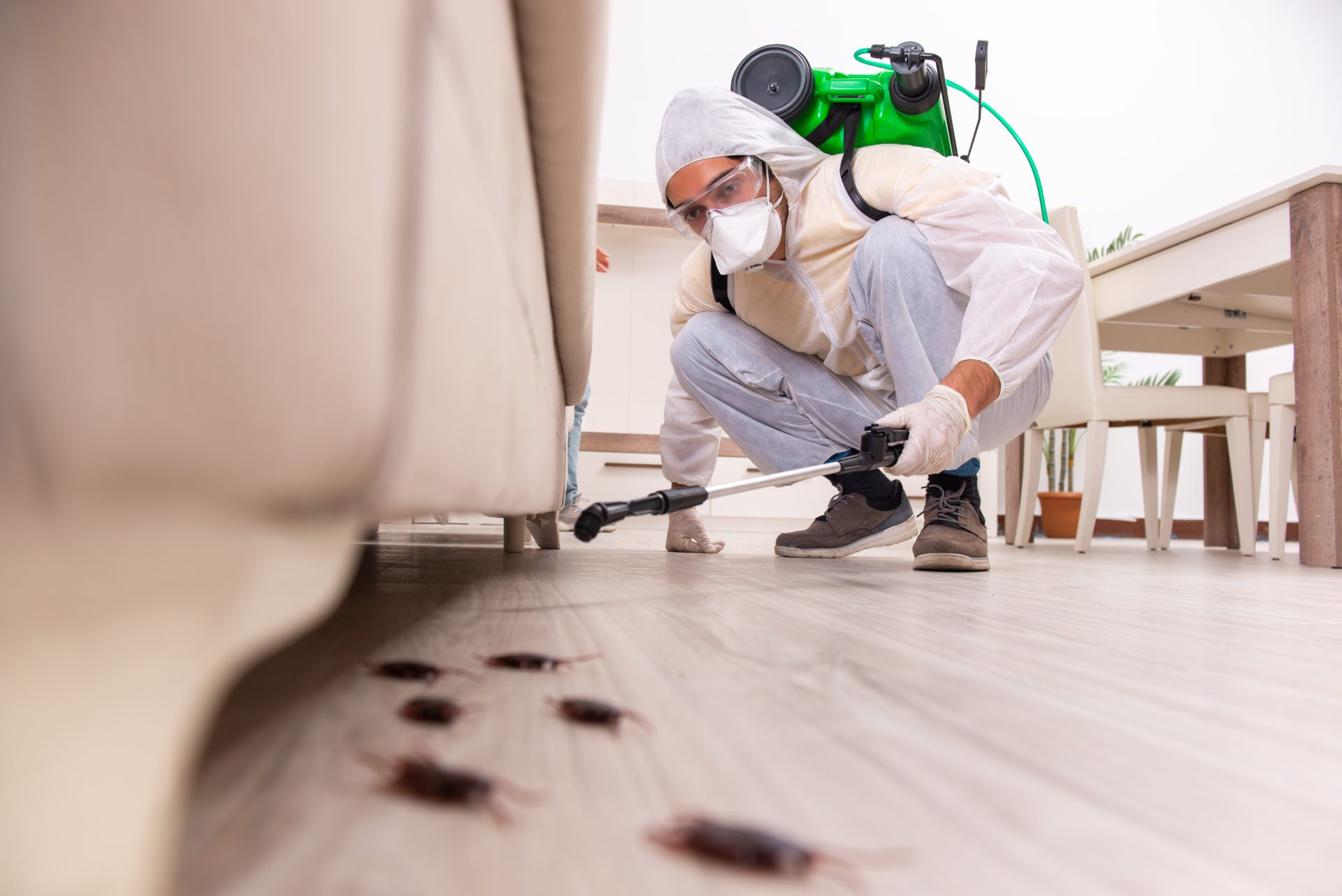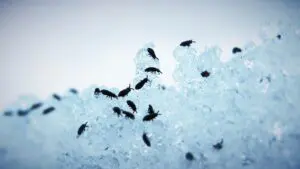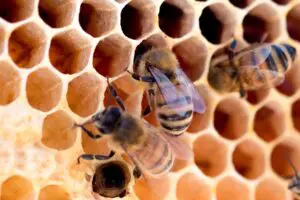

The United States is home to some of the most varied climates and environments of any country in the world, but such a diverse ecosystem creates the perfect breeding ground for infestations of critters.
Here at Excel Pest Services, we know first-hand how different locations and situations can attract different types of pests across the country, but which states attract pests the most? And which types of pests are the most popular in each one?
By compiling data on the number of farms, landfills and restaurants, climates, and pest-related Google searches in each State, we have been able to analyse the areas which are worst affected by different pests.
Quick links:
Which US States Are Worst for Pest Invasions?
Worst states for pest invasions
States with the least pest invasions
Which pests are most common in different states?
Which pests are America trying to get rid of most?
Which US States Are the Worst for Pest Invasions?
The worst states for pest invasions
Texas is the worst state in the US for pest invasions, according to the data. The southern state has almost 400,000 searches every month for queries related to getting rid of pests, and it is host to at least 246,000 farms, the most of any state by a huge margin. California had the second highest number of farms, but this still isn’t even half as many as Texas possesses.
Florida was a close second, as it is home to almost 1000 pest control removal companies - more than any other state in the country.
It might be expected that states like Texas, Florida and California would take top spots in this study given that they have large populations, and where there are more people, there tend to be more insects.
With this in mind, the study also looked at which states had higher likelihoods of pest invasions despite lower population sizes. It was revealed that Tennessee, despite having a population size of only 7.1m people, had the fifth highest pest invasion likelihood. It ranked higher than Illinois or Pennsylvania, whose population sizes almost double that of Tennessee’s. Virginia, which has a population of 8m people, ranked as the 8th worst state overall.
The states with the least pest invasions
Overall, it was states with lower population sizes and colder climates that were far less likely to attract pests. Vermont was the best state for avoiding pests overall, with only 9 landfills and 23 pest control companies in the entire state, and just 870 Google searches every month for pest removal queries. Rhode Island was the second best state overall.
Alaska had the lowest number of pest-related search queries of any state - just 590 searches a month in total, and it also had the fewest farms and pest control companies.
New Jersey, despite having a population of over 9m people, ranked 30th out of all 50 states in terms of pest likelihood, ranking much further down than States which had significantly lower populations like Tennessee (7m), Virginia (8m), Missouri (6m), and many others.
Ryan Fowley, COO and pest removal expert here at Excel Pest Services has commented on why some states have ranked more highly than others: “The prevalence of pests in certain US states over others is primarily influenced by climate, geographical location, and urban density. Warmer states like Florida and Texas experience higher pest activity year-round due to their warm, humid climates which provide ideal conditions for pests like mosquitoes, termites, and cockroaches, to thrive and reproduce. In contrast, colder states see a significant reduction in pest populations during the winter months.
Geographical features like large bodies of water and dense forests can also attract specific pests. States with extensive forested areas, like Oregon and Washington, are more susceptible to infestations of ticks and ants. Additionally, highly urbanized areas, like New York or California, can suffer from pests like bed bugs and rats due to high population density and abundant nesting sites. Effective pest management, therefore, requires an understanding of these various breeding conditions in order to tailor prevention and treatment strategies to the specific challenges of each state.”
Which Pests Are Most Common in Different States?
California has the largest population in the US, so it makes sense that it's the number one state for pest-related search queries based on volume. For this reason, California ranks highly for many different types of pests, including cockroaches, fleas, ants, and spiders.
These are the top states for each different type of pest:
| Type of pest | State they are most common in | Google search volume |
| Silverfish | California | 1,900 |
| Stink bugs | Ohio | 1,900 |
| Cockroaches | California | 5,400 |
| Beetles | New York | 110 |
| Carpenter ants | Florida | 1,300 |
| Fleas | California | 8,100 |
| Ants | California | 6,600 |
| Spiders | California | 1,800 |
| Termites | California | 2,400 |
| Mice | New York | 2,900 |
| Millipedes | Georgia | 480 |
| Bed bugs | California | 12,100 |
| Wasps | Texas | 1,300 |
| Ticks | California | 1,000 |
| Centipedes | Georgia | 190 |
| Rats | California | 2,400 |
| Hornets | Ohio | 480 |
| Earwigs | Michigan | 1,600 |
| Crickets | California | 1.900 |
| Bees | California | 1,600 |
| Spotted lanternflies | Pennsylvania | 1,000 |
| Mosquitos | California | 590 |
Which pests are America trying to get rid of the most?
The data above reveals that search queries around how to get rid of bed bugs, ants, fleas, mice and cockroaches have had the biggest year on year increases online, proving to be some of the most common pests to make it into our homes.
It’s unsurprising that bed bugs have had the largest surge in Google searches after their appearance at Paris Fashion Week in 2023, before spreading quickly around the globe and garnering a great amount of media attention.
In order to better equip you against these common household pests, we have provided some top tips on how to combat each one in your home.
How to get rid of bed bugs
Bed bugs are around 5mm in length, reddish-brown and leave behind rust-coloured stains, especially on bedding, clothing and furniture. They are most active at night, so be proactive during the day to prevent or get rid of them. The bugs also release pheromones, and if there are a lot of them in a given space, they can cause a nasty odor. The smell is a combination of sweat and dirty laundry, so if you smell anything unusual, it is a good idea to take a close look at the mattress and check for signs.
To prevent bed bugs from spreading further, you might want to consider using a protective bed bug sheet or mattress cover - if bed bugs bury into your mattress, this can help to keep them there as they often can't escape. If you suspect there has been an infestation, wash your clothes in very hot water before and vacuum your house - especially soft furnishings and bedding, thoroughly. If there are any items of clothing or bedding that have been affected, you should consider putting them into sealed plastic bags and keeping them in the freezer for 3 or 4 days to kill any remaining bugs.
Check out our full guide to beg bug prevention for the most comprehensive tips and advice.
How to get rid of ants
To prevent ants in your home, start by ensuring food items, particularly sugary food and meat, are sealed and not left out. It might sound obvious, but cleaning up food spills immediately on kitchen counters, floors, and dining areas, and regularly emptying trash and using sealed bins can also deter ants. Basically, keep a clean house and ants are far less likely to enter your living spaces.
Sealing entry points is crucial; inspect and caulk cracks around windows, doors, and foundations where ants may enter. Additionally, maintain a dry environment since moisture attracts ants - you can do this with dehumidifiers, fixing leaky pipes and ensuring good ventilation.
If ants have already entered your home, identify entry points and locate their trails and nests. Use bait stations strategically along their paths—ants will take the bait back to their colony, effectively eliminating the source. For immediate results, natural remedies like vinegar or essential oils can disrupt ant trails. In more extreme cases, consulting a pest control professional may be necessary to address larger or multiple infestations.
How to get rid of fleas
Preventing and eliminating fleas in your home involves a combined approach that targets both the fleas and their larvae. If you suspect a flea infestation, hygiene will be key to combating them. Regular vacuuming of carpets, furniture, and any pet bedding helps remove fleas and their eggs. After vacuuming, immediately dispose of the vacuum bag or empty the canister outside to prevent re-infestation.
Wash pet bedding, throws, and any washable items in hot water weekly to kill fleas and larvae. For pets, use veterinarian-approved flea treatments like topical applications, pills, or collars.
In cases of severe infestations, use chemical treatments such as sprays or powders that are specifically formulated to kill fleas in all stages of their life cycle. Ensure these products are safe for use around pets and children.
How to get rid of mice
To prevent mice from entering your house, seal all potential entry points such as cracks and holes in walls, floors, and foundations, paying special attention to areas where pipes and cables enter the building. Mice can fit through incredibly small spaces, so using steel wool or caulking can be an effective method of sealing tight gaps that they could otherwise fit through.
Due to their ability to move through small gaps, mice can also access food in cupboards and on countertops very easily. However, you can make it much harder for them to reach it by storing food in airtight containers, placing it higher up on shelves, and disposing of food scraps and garbage regularly in sealed bins. Clutter provides hiding spots for mice, so keep your home tidy and store items - especially anything made of paper or cardboard, off the floor.
For active removal, set traps along walls where mice tend to travel. Snap traps, electric traps, and live traps are effective options, especially if you bait them with peanut butter or cheese. Check traps daily for any catches, and dispose of any caught mice appropriately to ensure no bad smells or decay occur that might attract other pests.
You may also consider using rodenticides, but ensure they are placed where children and pets cannot reach them as these are toxic when consumed.
Check out our full guide on rodents for more insights into their environment and where they populate most.
How to get rid of cockroaches
In order to deter cockroaches, start by eliminating their food sources. Store food in sealed containers and avoid leaving dishes out overnight. Regularly clean counters, wash out sinks, and hoover floors to remove crumbs and spills. Dispose of garbage in a sealed bin and empty it frequently.
Reduce cockroach hiding places by decluttering and repairing any cracks and crevices in walls, around baseboards, inside cabinets, and near plumbing fixtures with caulk to block entry points. Ensure your home is dry by making use of a dehumidifier, fix leaky faucets and pipes, and ensure you clean up any spills or damp spots as cockroaches are attracted to moisture.
For active infestations, use bait stations and gel baits effectively by placing them in areas where cockroaches are likely to travel or hide, such as under sinks and behind appliances. Insecticidal sprays can also be used in these areas.
Contact Excel Pest Services today for all your pest control needs
Excel Pest Control Services offers professional and experienced assistance in managing your pest control needs.
From thorough inspections to tailored treatment plans, Excel Pest Control prioritizes your comfort and safety. Trust us to address your residential pest control and commercial pest control needs with precision and care, ensuring a pest-free environment for your home or business.






